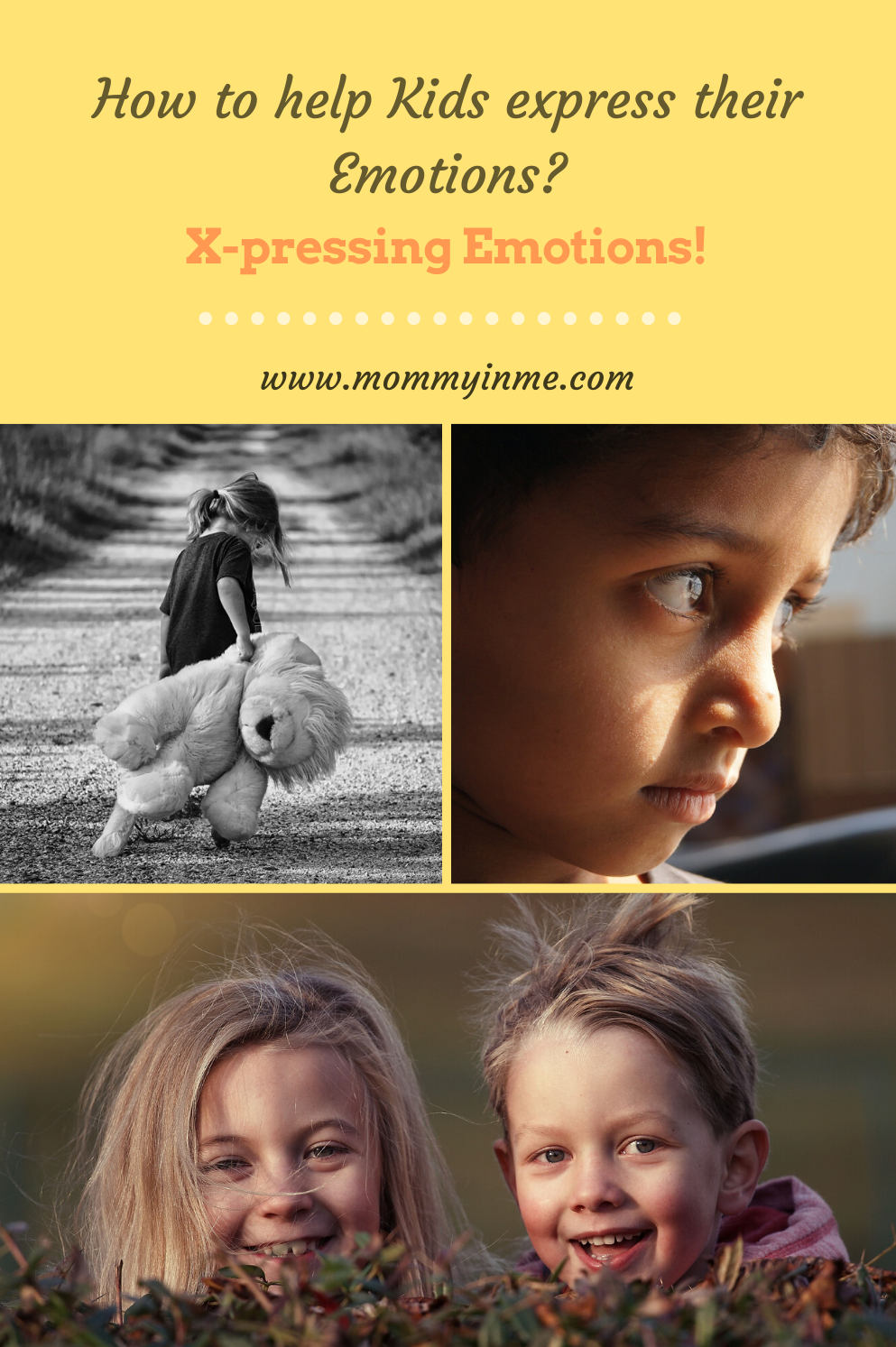Do kids express their emotions?
Do you think kids express their emotions? Can they understand their feelings, give it a name and also verbalize it? Well, it is a mammoth task to expect this from children, as they are don’t know the emotions they are experiencing. They don’t know if that’s an anxious feeling or an overwhelmed feeling. All you will experience as a parent is a change in their behavior, added frustrations turning to meltdowns.
A part of building up kids “Emotional Quotient”, that goes a long way in their life is Understanding the emotions, giving them a name, and also devising ways to manage (not control always) them. We, as adults have mastered this art over the years and some of it is yet under processing, don’t you agree? Many times even we don’t stop to process our emotions and show them, then how can we expect this from kids?
Related Read: How to enable kids to manage their emotions effectively?

How can you help kids express their emotions?
All, we can do is, to help them learn their feelings, and come up and share it with parents, without any turbulence. Toddlers can be introduced to basic feelings as happy, sad, kindergartners can be coached to understand the feelings of nervous, shy, anxious, frustration.
Show children the ways they can express their feelings when they are calm. Let them know that it is OK to have a myriad of emotions and it is wise to express them judiciously. As per your child’s interests and behavioral development, you will have to coach them the ways to calm down.
- My friends’ daughter is very sensitive and painting works wonders for her when she is stressed out, whereas my son loves to sit in the calming nature surrounded by greens to calm himself.
- Physical activities like high-Jump high, go for a run, sports also act as stress busters.
- A meditating room, a glass of water, singing engaging into some craft are other strategies.
- While one strategy may work for a child, it might not work for another. And storybooks are one of the best ways to help them learn about emotions and how to manage them.
Read them stories that talk about feelings:
Children’s books that talk about feelings, helps you raise Emotionally sound and Intelligent kids. Start with books that introduce them to varied feelings and emotions.
Here are some children’s storybooks helping them understand and express their emotions:
1. Today, I Feel…:An Alphabet of Feelings:
A wonderful ABC of feelings that act as the start of this conversation with your child. It shows how a child is full of varied emotions, while all are not positive, and some are complex, but that’s how human emotions are.
2. All About Feelings:
Another good starter book, which helps kids identify their feelings today. It’s a very engaging storybook which reflects on points as describing feelings, how to be kind (to yourself), how easily feelings change. This book is a good read even for adults, I’ve read it twice.
One of a great pick from Usborne Publishing.
3. The Unbudgeable Curmudgeon:
A playful and storybook, children (more so siblings) will find it like their real-life read. The story is about a young girl, who is determined to get her brother out of a bad mood. It is represented in the form of a shock-headed monster. How her attempts fail and this bad- mood passes on to herself. Will they be able to budge the curmudgeon? The illustrations are phenomenal in this book and it helps children talk about anger, how it contagious it can be, and how to have feelings of empathy and compassion.
A beautiful story you must read to your child.
4. The Way I Feel:
One of the most famous books, when spoken about emotions and kids. A very charming book, which helps kids understand that every day, there will be a new set of emotions. No feelings last forever! It portrays varied emotions like pride, jealousy, shyness, happiness, frustration, and more. The rhyming words and the illustrations are brilliant in this storybook.
5. Millie Fierce:
This storybook sounds very real, as kids do have such bad hair days and react in similar ways to grab the attention. Millie, a sweet and calm girl, is frustrated as her school kids do not listen to her. She feels overlooked and suddenly one day she decides to be fierce. She starts running like a wild to get the attention but soon realizes that being fierce up to the level of being mean, can never be a solution to get that attention.
A very adorable character, you’ll love the character and also empathize with Millie.
6. My Heart, by Corinna Luyken:
The lyrical words and the breathtaking illustrations, make this a wonderful read, even for the adults. It reflects how human heart experiences things and can have various expressions. My heart is a window. My heart is a slide. My heart can be closed…Or opened up wide!
The words are a metaphor for children’s feelings. They are happy at times, while they can be scared, they can be joyful, but they can also feel gloomy. But in the end, when the going gets tough, it is their family and friends which help them sail through. A child has every right to experience these emotions and also try to express the way they are feeling.
A beautiful book, to be added to the collection.
7. The Color Monster: A Pop Up Book of Feelings:
Not so cheesy but a simple book, helping children understand their common feelings in a very straightforward way. With lovely graphics, we loved how it talks about so many emotions that a child may be experiencing at any given time. A simple yet effective book.
8. The Boy with Big, Big Feelings:
This is a very relevant read for those children who experience extreme emotions or very BIG feelings, as the book says. His feelings go so big that they spill from his eyes, glow from his cheeks. They are massive, as he feels every emotion as his own. He tries to confront his emotions by stuffing them. But with some help and artistic inspiration, he realizes that feelings are not to be stuffed, but they are to be celebrated.
Apart from these books, make it a point that whenever you are reading a book to your child, discuss how the characters in the story are feeling. Show those feelings via expressions on your face. This will help children understand and identify their emotions.
Do you make storybooks to help children understand and express their emotions in the right way? Which reads have worked for you? Share in comments below.





Great suggestions Jhilmil. It is a very sensitive topic and you took it with ease and excellence. Thanks for the amazing post.
I am going to get one of these books immediately for my kid. I often feel that we do not spend enough time talking about feelings with our kids. That leads to them and us being overwhelming.
Lots of very interesting points. The emotional well being of a child is as important as the physical well being.